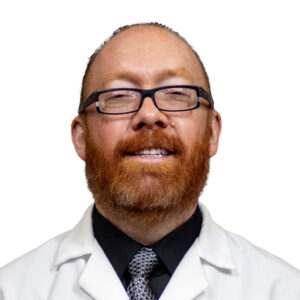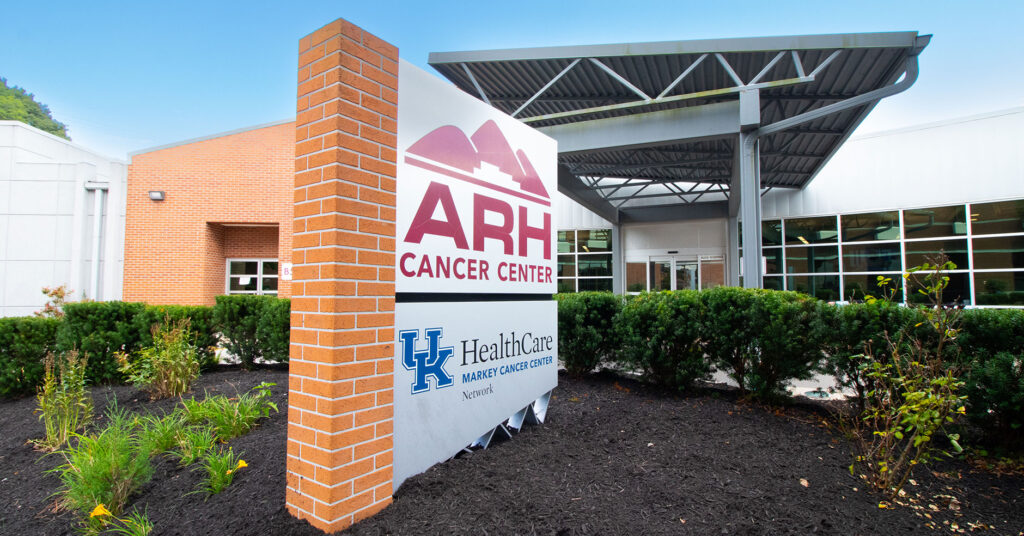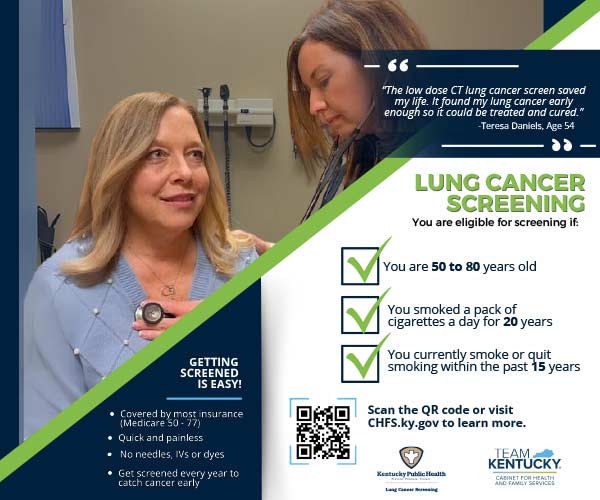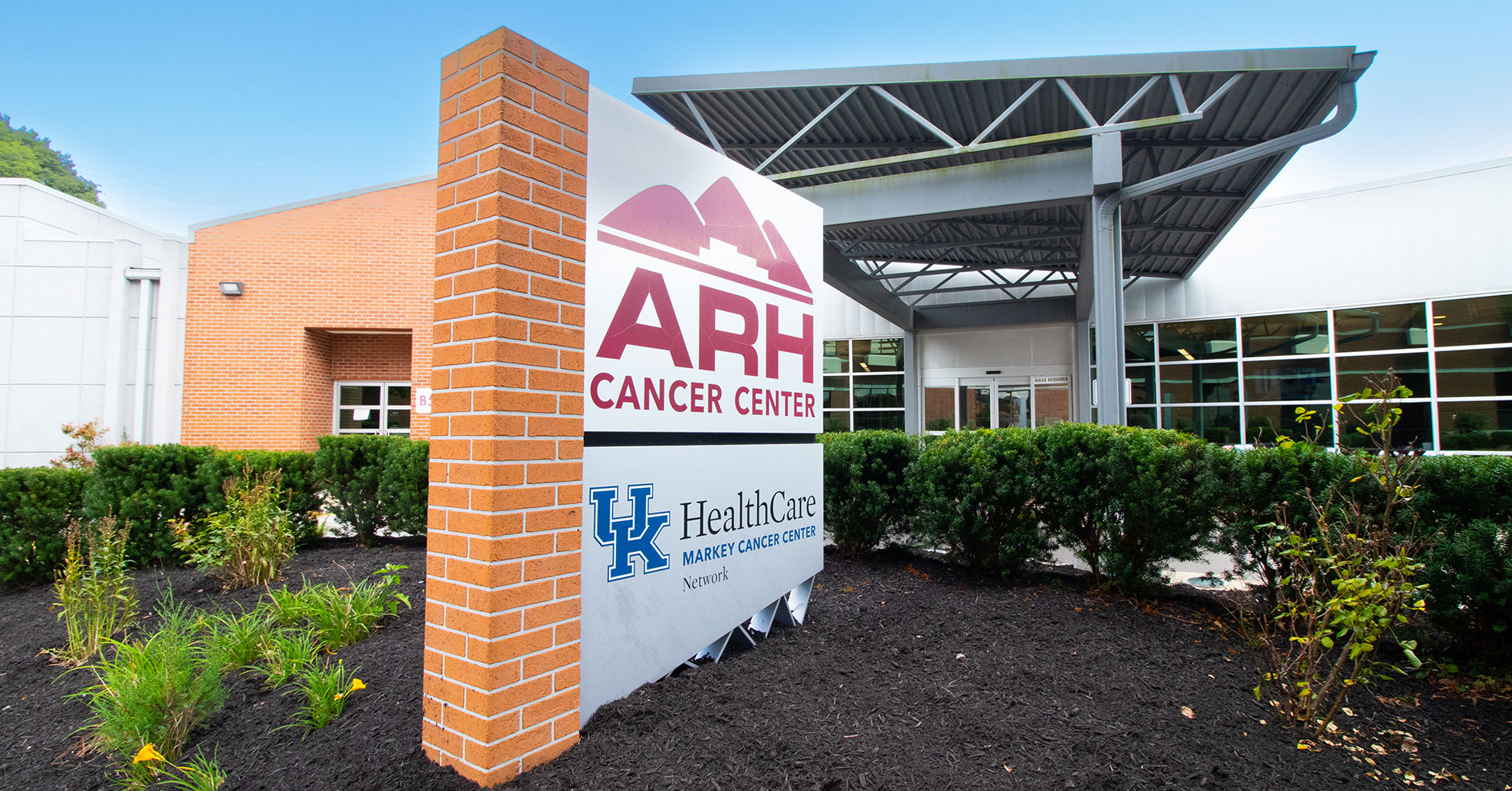HAZARD The famous line from the twentieth-century American novelist Thomas Wolfe that says “you can’t go home again” is often misunderstood. The “home” that Wolfe refers to is not the physical place, but the psychological and emotional place of your childhood. That “home” doesn’t exist anymore because you are different and most likely, so is the place. When you return to your childhood home, you are both different; you can’t turn back time.
Don Stacy II, MD, radiation oncologist at Appalachian Regional Healthcare (ARH) grew up in Hazard, Kentucky, and lived there through high school when he left to attend the University of Kentucky in 1991. “When I left Hazard for Lexington, I thought there was a 99.9% chance that I would never live there again,” he says.
Stacy graduated from UK with his BS in physics. Both of Stacy’s parents were educators. His mother, Vera, was a high school social studies and history teacher who eventually became a guidance counselor. His father Don was a teacher at A.B. Combs Grade School and principle at M.C. Napier High School. A professional career was always expected for the younger Stacy. “In college I was deciding between engineering, law, or medicine,” he says. “I finally decided that medicine was where I belonged.”
Stacy received his medical degree from the University of Louisville School of Medicine, followed by his residency and a fellowship at Vanderbilt in 2004. He returned to Louisville and worked for a radiation clinic until 2018 when he was recruited by ARH because the radiation oncologist there, P. I. Narayan, MD, was transitioning into semi-retirement.
Stacy recalls that some of Narayan’s staff knew he was from Hazard. “I had not really considered returning to home, but I thought it was worthwhile to come for the interview

and discuss the options, and their vision for the radiation oncology department,” he says.
“I was ready to take on a different challenge, to really build a practice. The practice in Louisville was set up, and there wasn’t much more to build, we had maxed out. Here at ARH Hazard, the goal was to transform the radiation oncology department into the modern era, using the most modern equipment and sophisticated forms of radiation,” says Stacy.
Stacy recalls the Hazard of the 1970s and 80s as being very isolated, “Of course, there was no internet, or cell phones, and only a couple of early model Commodore computers,” he says. The major employers were coal companies and the school system. Healthcare was a distant third.
A different, less isolated Hazard greeted Stacy in 2018. Better roads, with the internet and cell phones and much less coal mining. Healthcare had become a dominant industry with ARH leading the way. “I felt that I had come home to a different place,” he says.
Also, having worked in Louisville for over ten years, he had an immediate appreciation for the role of the practitioner in the rural setting, where he felt more comfortable.
“When you’re in an urban area, you’re just one of multiple options for patients. That’s not really a bad thing, but in a rural area, like Hazard, where you’re the only game in town, your patients really rely on you because you’re their only option. That brought me a lot of fulfilment, and I was finally happy in my work,” he says.
Radiation Oncology at ARH in 2025
As the sole radiation oncologist at the ARH Regional Medical Center in Hazard, Stacy’s adult patient population is predictably large and wide-ranging. It includes the most common cancers found in the lungs, throat and neck, colon, breast, rectum, and prostate, as well as skin melanomas. Common comorbidities include obesity, diabetes, smoking, and hypertension. Pediatric patients are referred to Saint Jude or Cincinnati Children’s Hospital.
In a typical work week for the ARH Hazard radiation department, Tuesdays are reserved for current patients who are receiving radiation. With the skilled assistance of nurse practitioner Jessca Ivy, NP, and nurse navigator Shannon Morton, RN, patients are seen nonstop for vitals examination, discussing how their treatment is going, and making appropriate adjustments. Morton helps patients with travel issues, social issues, and gas cards, and with arranging patient transportation from home to the cancer center to get their treatment.
The remainder of the work week is devoted to new patients who have never received treatment, or to patients who have received treatment in the past and have either developed a new cancer or have recurrence. Referrals come from medical oncologists, general surgeons, some primary care physicians, and dermatologists.
For any doctor, the first patient meeting is always critically important for gathering

information, insight into the patient’s condition and goals, and establishing trust between patient and physician.
Stacy describes it this way: “Usually it’s an hour-long discussion because whenever we do a course of radiation, we want the patients to understand what the treatment side effects would be, the long-term risk, the benefits of treatment, and the number of treatments, if they choose radiation as part of treatment.”
Many of Stacy’s radiation patients come with a preconceived negative impression of what radiation therapy does to the patient, because they saw it in their parents or grandparents who received it twenty-plus years ago. In his first meeting with his patients, Stacy explores those notions and seeks to calm their fears.
“It’s very common for patients to say, ‘Well, my grandmother or a family member got radiation treatment twenty years ago, and it was horrible,’” says Stacy.
He continues, “We explain that back then, we didn’t have the computers and appropriate imaging that could really target the radiation. Now it’s all computerized. I explain to patients that when we do a CT scan, we fuse together their other MRIs and PET scans with very sophisticated imaging. That lets us draw out exactly where the tumor is, and where all the normal tissue is that we want to avoid. We then use very sophisticated computer mapping to plot the best way to deliver the radiation to where it’s much more targeted, much more effective, and much less toxic than it was before. It’s all computer and robot driven,” says Stacy. The newer radiation modalities of IMRT, intensity modulated radiation therapy, and stereotactic radiation have dramatically improved radiation oncology for patients at ARH, says Stacy.
“In the past, we would use three or four larger beams of radiation, but with IMRT we’re asking the computer to evaluate about a million different ways of giving the radiation. Then we’re giving tumors two to three hundred very tiny beams of radiation. When you do it that way, you can really focus the radiation to just the tumor, and limit the radiation to other surrounding normal tissue,” he says.
“Stereotactic is the even fancier version. Instead of doing little tiny doses over several weeks, you’re doing one to five very large doses of radiation. That, by definition, requires the IMRT type treatments. When we do super focused radiation, we can safely give very large doses of very few treatments. We’ve always known that that’s the best way to get radiation, It’s just that in the distant past, we didn’t have the technology to even consider it,” Stacy says.
The Team Approach
When Don Stacy joined ARH, it was his goal to expand the radiation department with additional providers, services, and eventually more patient access points. Some of that has come into fruition with the addition of Ivy, nurse practitioner, and nurse navigator Morgan. The practice has also added registered dietician Cassidy Marshall, RD, LD.
“She’s a crucial part, part of the team,” says Stacy, “because a key issue with patients not completing treatment, is their nutrition status. When patients lose a lot of weight during treatment, they tend to end up in the hospital, and then they can’t complete the treatment. Having Cassidy in the Cancer Center has allowed us to prevent that. Since she’s come on board, our patient missing treatment rates have dropped and completion rates have risen.”
Stacy continues, “We also now have a licensed clinical social worker. Kaitlyn Warfield, MSW, LCSW. A lot, nearly all cancer patients, have depression, anxiety, a variety of mental health issues. That’s just never addressed unless you have someone to take care of that. We now have a person to see every possible patient and have those discussions.”
In Conclusion
Stacy is currently the 14th-District trustee member for the Kentucky Medical Association. He’s been on the board of trustees for the last three years and was re-elected this year for another three-year term. Initially, he got involved with the KMA because of the medical cannabis issue, of which he was an early proponent of legalizing. It’s been a long road, but Stacy feels he has found his place and his work. “Our goal really is to be the best cancer center in Southeast and Eastern Kentucky. If we aren’t now, our goal is to continue to build to that.”




